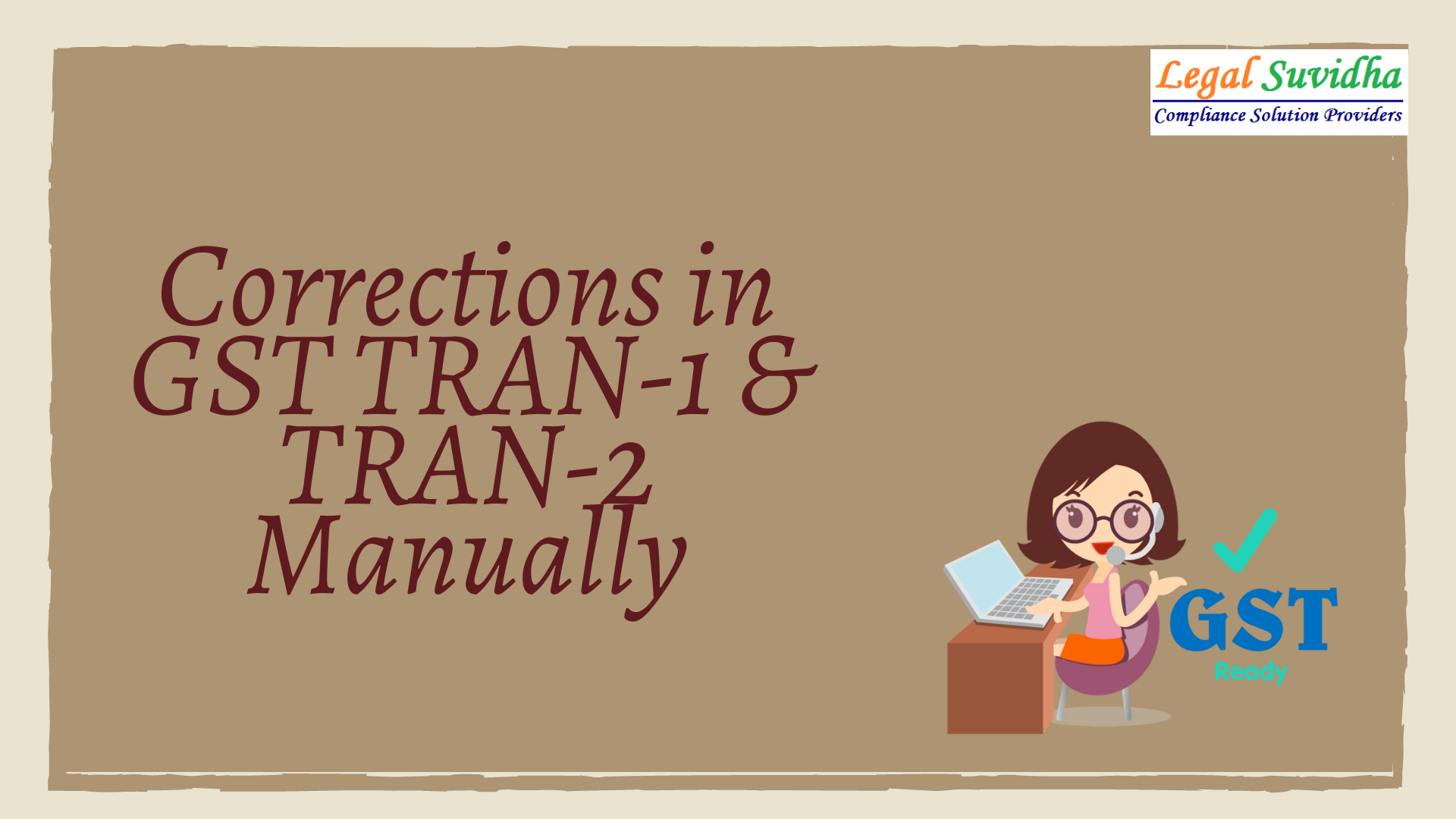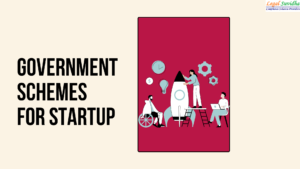MAKE CORRECTIONS IN GST TRAN-1 & TRAN-2 MANUALLY
What is Tran-1?
i. Every registered person who is entitled to carry forward input tax credit (ITC) from earlier regime to GST regime is required to submit declaration in TRAN-1 electronically.
ii. Format of TRAN-1 has been provided under CGST Rules and is available in electronic format on GST common portal.
iii. Section 140(3), (4) & (5) of CGST Act r/w Rule 117 of the CGST Rules prescribed time to file return called Tran-1 claiming closing balance as per returns and fresh credit based on the availability of stock &availability of original copy of duty/tax paid documents
Broad aspects of the transition to GST
Transition aspects mainly relate to
- Input Tax Credit of the old regime that you want to claim in the new regime (report in TRAN-1)
- Avoid any disruption to material sent to job workers ( report in TRAN-1)
- Report agent principal dealing and dispatch of goods, works contracts (report in TRAN -1)
- Tax refunds and claims under the old regime (not reportable in TRAN -1 or TRAN -2)
Things to remember for transition to GST
- Transition forms must be filed for each GSTIN separately.
- Any credit that you want to carry forward from the old regime must be eligible credit under GST as well.
- Accumulated credits of old regime can be taken to GST. This is allowed only when you have filed past six months returns under the old regime. So you must file old returns of VAT/ Excise/ Service Tax properly.
- Any central taxes and duties such as Excise and Service tax will be carried forward as CGST
- Any state taxes such as VAT will be carried forward as SGST
Information required in TRAN 1
Here is an item wise break up of information required in TRAN 1
- GSTIN – Mention your GSTIN number
- Legal Name of Registered Person – Mention your legal name in full
- Trade Name: If you are using any Trade Name, mention that
- Confirm that you have submitted ALL the returns required under existing law for past 6 months– Answer is in the form of Yes/No. The closing balance of CENVAT/VAT credit of past returns can be taken as a credit in your GST electronic ledger only when you have filed returns for the previous six months under the old regime.
- Tax credit carried forward in the return filed under existing laws Under this you have to provide details of all the cenvat credit you want to move to GST.
The details to be provided are as under → 5a.5b.5c
a) Amount of cenvat credit carried forward to the electronic credit ledger as central tax ( Central Excise and Service Tax) Section 140(1) and Section 140(4)(a).
Applicable for a registered person other than a person paying tax under composition scheme, who was registered under the old regime and has furnished the returns under the old regime. (Section 140(1) of the CGST Act).
Input credit related to taxable supply where the registered person was providing/manufacturing both taxable as well as exempted service/goods under the old regime. (Section 140(4) (a) of the CGST Act).
Such a person can claim excise and service tax input credit balance reflected in the return. So this table is required to be filed if you are registered as a manufacturer or as a Service provider & if you have a closing balance of CENVAT credit in your return for the period ending 30th June 2017.
The following details have to be provided –
Table input 1: Serial No
Table input 2: Registration no. under existing law ( Central Excise and Service Tax) – provide your central excise and service tax registration number (both are unique 15 digit number)
Table input 3: Tax period to which the last return filed under the existing law pertains – give the period of the last return filed by you. Say for eg if you are an excise manufacturer you have to file monthly ER-1 and quarterly ER-3. Under this part, you provide details of both these returns filed for the past six months.
Table input 4: Date of filing of the return specified in Table input 3 – Provide the dates of the returns as mentioned above
Table input 5: Balance CENVAT carried forward in the said last return Provide amount of CENVAT credit you have carried forward for each return
Table input 6: CENVAT credit admissible as ITC of central tax in accordance with transitional provisions Provide amount of credit that you are eligible to carry forward out of the credit appearing in old return forms
b) Tax credit for C Forms, F Forms and H/I Forms which you want to carry forward [this information is to be provided for the period 1st April 2015 to 30th June 2017]
Here’s a simple recap of what these forms are –
‘C Forms’ – C Form is issued by a registered dealer (purchaser) to a registered seller when an interstate sale is made. When purchases are made under a C form Central Sales Tax (CST) is 2%.
‘F Forms’ – Are used for making branch transfers without paying tax. F Form is issued by the branch office/consignment agent receiving goods as branch/stock transfer to its head office/principal who is sending the goods. The Head office/Principal uses F forms to prove that goods sent are stock/branch transfer and not sale.
‘H/I Forms’ – used in case of Exports for local purchases made without payment of tax. This Form is issued when the buyer is an exporter and is purchasing inter state for exports. If the exporter/buyer issues H form, the seller is not required to charge or pay any CST on the transaction.
For each of these forms provide the following information – TIN of Issuer Name of Issuer Serial Number of Form Amount Applicable VAT Rate
c) Tax credit for State/UT Tax for pending C Forms, F Forms and H/I Forms (For all registrations on the same PAN and in the same State) –
If you are registered under any State VAT & if you have any pending C-Form/F Form/H or I Form then you are required to pay the differential tax as you are not eligible to charge concessional CST rate.Such Differential tax payable will be deducted from the input tax credit balance available in the last return filed by you & the remaining credit will be carried forward under GST Regime.
NOW YOU CAN MAKE CORRECTIONS IN GST TRAN-1 & TRAN-2 MANUALLY:
Correction in GST TRAN-1 Form is a huge task now a days because of the technical glitches and/or the request for amendment/ revision/ modification of TRAN1 Form was not allowed. For those who are facing issues with the correction of GST TRAN-1 and TRAN-2, the Bombay High Court in the case of Ashoka Buildcon Ltd…
While disposing 122 writ petitions, the Bombay High Court comprising Justice has allowed the taxpayers to correct TRAN-1 & TRAN-2 either manually or online.







